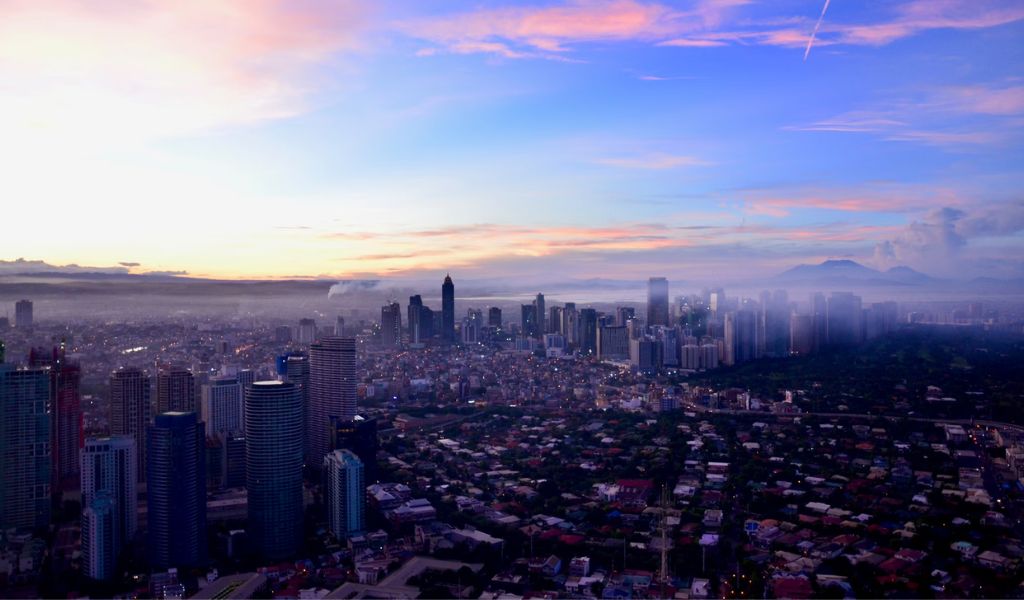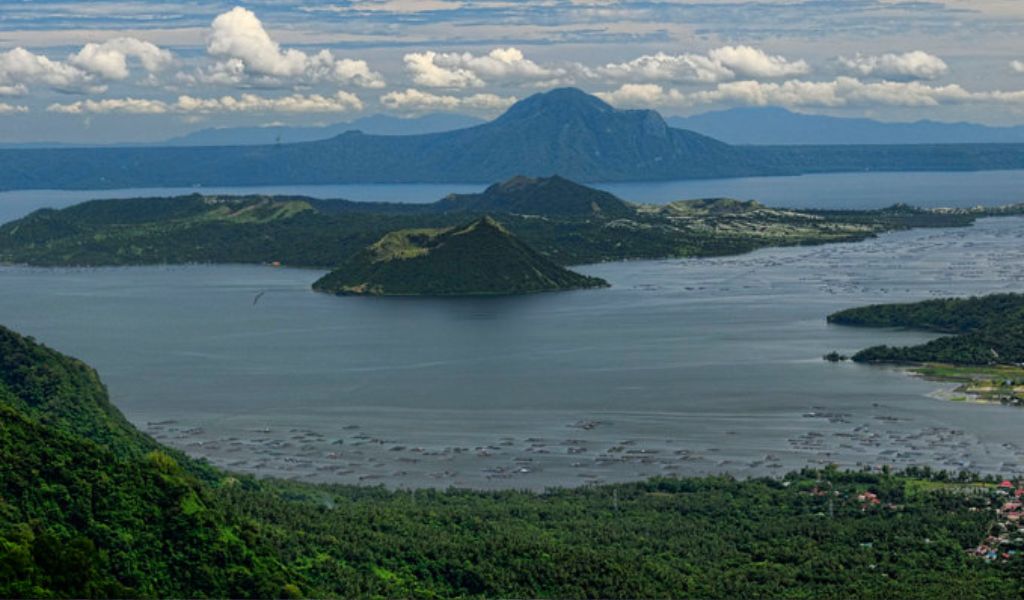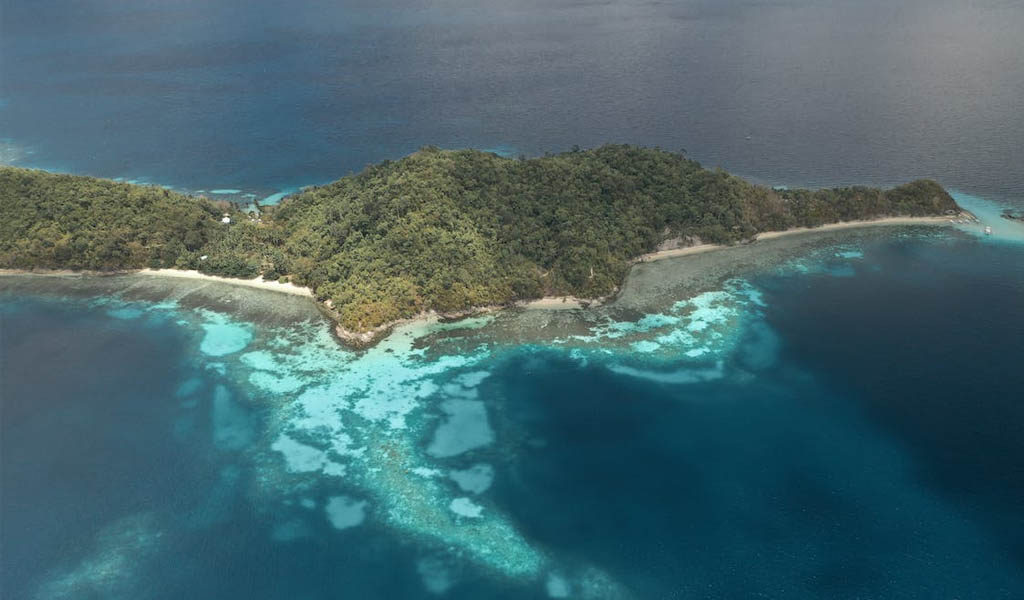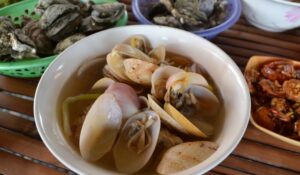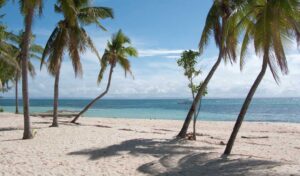Embarking on an Island Adventure: Discover Tourist Spots in Mindanao
Mindanao, the second-largest island in the Philippines, is a treasure trove of breathtaking landscapes, rich cultural heritage, and exhilarating adventures. Often overshadowed by the more visited islands of Luzon and the Visayas, Mindanao offers an array of off-the-beaten-path tourist spots for intrepid travelers looking to experience the untamed beauty and unique charm of the Philippines. From the crystal-clear waters of its dive spots to the majestic heights of its mountains, brace yourself for a deep dive into the top 10 tourist spots in Mindanao you absolutely can’t miss.
1. Explore the Depths of the Enchanted River in Hinatuan
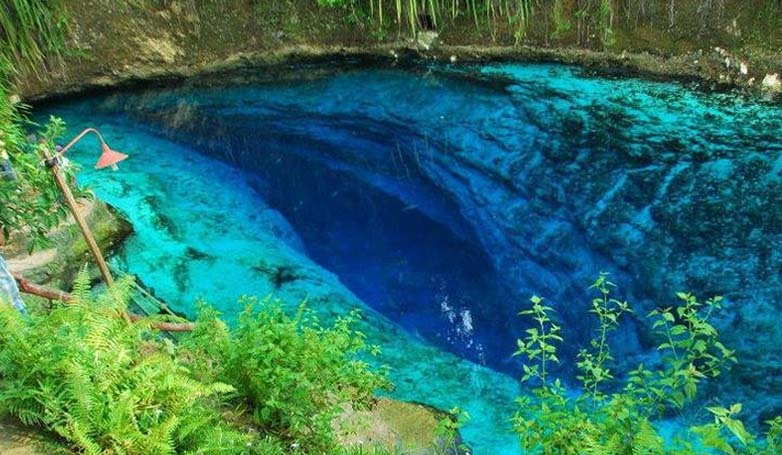
The Enchanted River in Hinatuan, located in the province of Surigao del Sur in Mindanao, is a stunning natural wonder that has captivated the hearts of both locals and tourists alike. Known for its mesmerizingly clear, blue waters that seem to shimmer with an otherworldly glow, this river is a perfect blend of natural beauty and mystery. It is said that the river’s vibrant color is due to the unique combination of minerals found in the surrounding rocks and the underground springs that feed it.
The Enchanted River is surrounded by lush greenery and limestone formations, creating a serene and picturesque setting ideal for swimming, snorkeling, and exploring. The river is also steeped in local folklore, with tales of mystical creatures and spirits said to protect the waters, adding an element of intrigue and enchantment to the visitor experience. Whether you’re seeking adventure, relaxation, or a glimpse into the rich cultural tapestry of Mindanao, the Enchanted River offers an unforgettable destination that showcases the natural splendor and mystical allure of the region.
Facts
- The Enchanted River has a unique daily spectacle called the “Hymn of Hinatuan,” where the river’s area is cleared, and a song is played while various species of fish appear to be fed, drawing tourists’ attention to its mystical charm.
- The local folklore speaks of supernatural guardians watching over the river, contributing to its ‘enchanted’ reputation, with stories of engkantos (mythical environmental spirits) that protect it.
- It is a habitat for various species of fish, many of which are not observed anywhere else and can be seen by snorkelers gliding over the mesmerizing bed of the river.
2. Conquer the Peak of Mount Apo
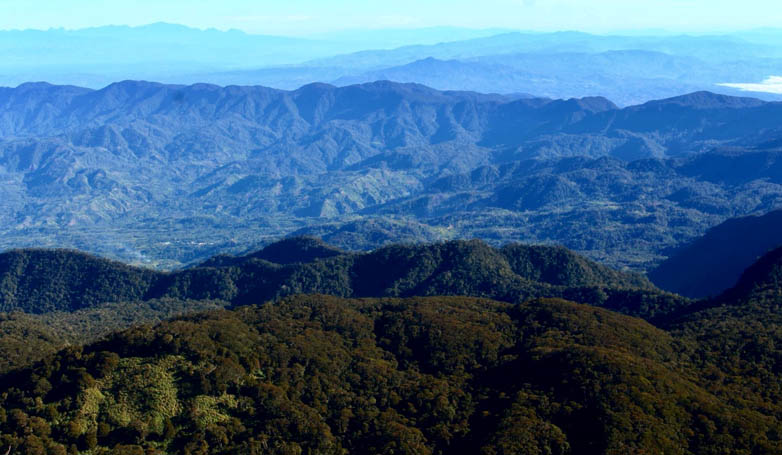
Mount Apo, the highest peak in the Philippines, stands majestically in Mindanao, offering a paradise for adventurers and nature enthusiasts. This active stratovolcano rises to 2,954 meters, providing a challenging yet rewarding climb that attracts trekkers from around the world. The journey to the summit is a trek through diverse ecosystems, from lush tropical rainforests and mossy swamps to rocky slopes and volcanic craters. Along the way, hikers can encounter a variety of wildlife, including the critically endangered Philippine eagle, adding a sense of wonder and excitement to the adventure.
The panoramic views from the summit are breathtaking, with sweeping vistas of Davao City, the Davao Gulf, and the neighboring mountain ranges. Mount Apo is not only a natural marvel but also holds cultural significance, being a sacred site for the indigenous tribes in the region. Whether you’re scaling its heights or exploring its rich biodiversity, Mount Apo promises an unforgettable experience that showcases the unparalleled beauty and ecological wealth of Mindanao.
Facts
- Mount Apo is a protected area reclassified as Mount Apo Natural Park in 1936 to preserve its biodiversity, which includes hundreds of plant species, birds, and the iconic Philippine eagle.
- The summit of Mount Apo hosts one of the few craters that have a crater lake on a Philippine volcano, aptly named Lake Venado.
- The mountain is considered sacred for the indigenous people living at its slopes, notably the Bagobo tribe, who refer to it as “Apo” meaning “ancestor” or “grandfather”.
3. Bask in the Sun at Dahican Beach
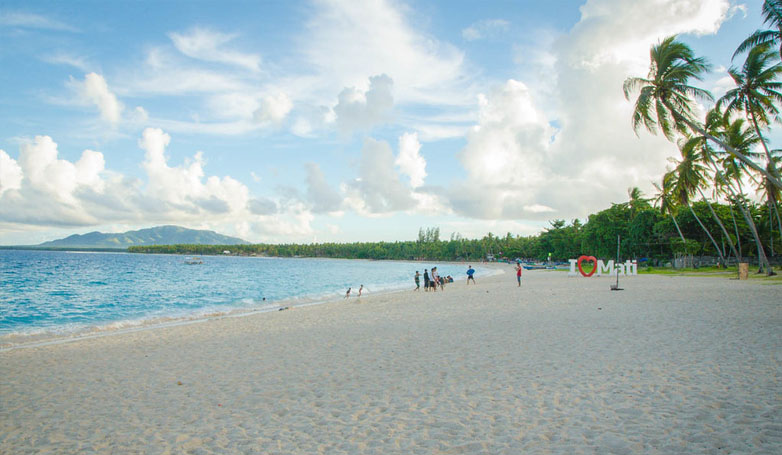
Dahican Beach, located in Mati City, Davao Oriental, is a pristine gem on the southeastern coast of Mindanao, renowned for its powdery white sands and crystal-clear turquoise waters. This 7-kilometer stretch of beach is a haven for beachgoers and adventure seekers alike, offering an array of activities such as swimming, sunbathing, and beach volleyball. Dahican is particularly famous for its strong waves, making it a popular destination for surfers and skimboarders who come from all over to ride its impressive swells.
The beach is also a crucial nesting site for endangered marine turtles, particularly the Hawksbill and Olive Ridley species, which adds an element of ecological importance to this stunning locale. Local conservation efforts are in place to protect these turtles, allowing visitors to witness the magical sight of hatchlings making their way to the sea. With its breathtaking natural beauty, vibrant marine life, and exciting water sports, Dahican Beach is a must-visit destination that showcases the best of what Mindanao has to offer.
Facts
- Dahican Beach is not only a popular destination for its natural beauty but also plays an important role as a sanctuary for the critically-endangered Hawksbill and Green sea turtles, which come ashore to nest.
- It’s the home to the Amihan Boys, a group of local surfers and skimboarders who have become well-known for their skills and for promoting environmental conservation in the area.
- Dahican Beach faces the Pacific Ocean, which brings both the refreshing sea breeze known as the “Amihan” and the vigorous waves that make it ideal for surfing during the peak season from November to March.
4. Witness the Grandeur of Maria Cristina Falls

Maria Cristina Falls, often referred to as the “Twin Falls,” is one of the most majestic and powerful waterfalls in the Philippines, located in Iligan City, Lanao del Norte. This natural wonder plunges from a height of 320 feet and is fed by the Agus River, creating a breathtaking cascade that splits into two separate streams during its descent. The falls are surrounded by lush greenery and rugged cliffs, adding to their dramatic beauty.
Maria Cristina Falls is not only a stunning natural attraction but also a vital source of hydroelectric power, contributing significantly to the energy needs of Mindanao through the Agus Hydroelectric Plant. The falls are part of the National Power Corporation’s Nature Park, which offers visitors a chance to view the falls from various vantage points and learn about their role in local power generation. With its awe-inspiring scenery and importance to the region’s infrastructure, Maria Cristina Falls stands as a symbol of both natural splendor and human ingenuity in Mindanao.
Facts
- Maria Cristina Falls supplies a large portion of Mindanao’s electricity, as the Agus VI Hydroelectric Plant harnessed at the waterfall’s base is responsible for generating 70% of the power for the entire island.
- The falls are named after two legendary sisters, Maria and Cristina, who, according to local mythology, jumped off the cliff to avoid unwanted suitors, giving the falls a romantic yet tragic narrative.
- The site is also developed as a nature park known as NPC Nature’s Park. It includes a viewing deck for the falls, a botanical garden, and other facilities for tourists and nature enthusiasts.
5. Immerse Yourself in the Culture of the T’boli at Lake Sebu

The T’boli at Lake Sebu offer a captivating glimpse into the rich cultural heritage and traditions of one of Mindanao’s indigenous peoples. Nestled in the highlands of South Cotabato, Lake Sebu is a serene and picturesque destination, home to the T’boli, who are renowned for their vibrant arts, crafts, and music. Visitors to Lake Sebu can immerse themselves in the T’boli culture by exploring traditional villages, where they can witness the intricate process of weaving the famous T’nalak cloth, a beautiful handwoven fabric made from abaca fibers. The T’boli are also known for their colorful traditional attire, ornate jewelry, and intricate beadwork, all of which reflect their deep connection to nature and their ancestral heritage.
The serene waters of Lake Sebu, surrounded by rolling hills and lush vegetation, provide a tranquil backdrop for cultural immersion and eco-tourism activities. Boat rides on the lake offer breathtaking views and opportunities to visit floating fish cages and lotus gardens. Lake Sebu is also famous for its Seven Waterfalls, where visitors can hike and enjoy the stunning natural scenery. Engaging with the T’boli community at Lake Sebu offers a unique and enriching experience, blending natural beauty with the rich cultural tapestry of Mindanao.
Facts
- The T’boli tribe reveres Lake Sebu as a sacred place, with multiple myths and legends surrounding its origin and existence, and they practice sustainable methods of aquaculture with species like tilapia being farmed on the lake.
- Traditional T’boli crafts such as brass casting, beadwork, and the weaving of T’nalak fabric, a material made from abaca fibers dyed with natural extracts and woven into intricate patterns, are major cultural highlights and have gained international recognition.
- Lake Sebu is also known for its Seven Falls, a series of seven cascading waterfalls that can be experienced through a zipline adventure, offering breathtaking aerial views of the region’s lush landscape and the waterfalls themselves.
6. Dive into the Marine Sanctuaries of Camiguin Island
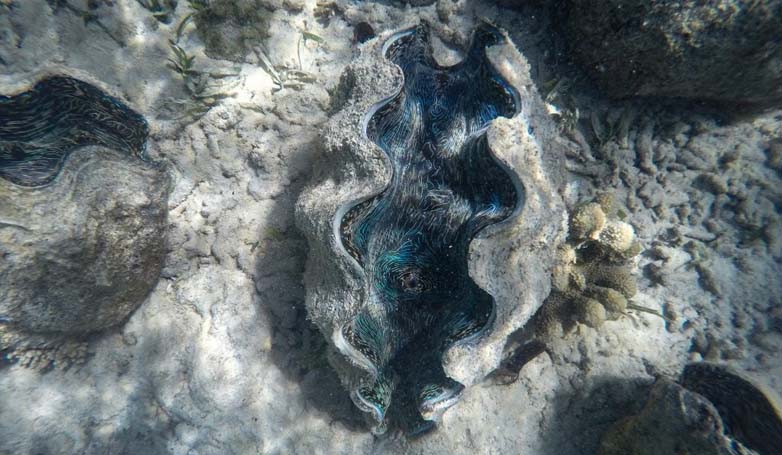
The marine sanctuaries of Camiguin Island, located in the Bohol Sea north of Mindanao, are a testament to the island’s commitment to preserving its rich marine biodiversity. Known for their vibrant coral reefs, clear waters, and diverse marine life, these sanctuaries provide a haven for snorkelers, divers, and marine biologists alike. The island’s waters are teeming with a variety of fish species, sea turtles, and colorful corals, making it a paradise for underwater enthusiasts. One of the most notable sanctuaries is the White Island Marine Sanctuary, a pristine sandbar surrounded by azure waters that offer an unparalleled snorkeling experience.
Another highlight is the Mantigue Island Marine Sanctuary, where visitors can explore lush coral gardens and encounter an array of marine creatures. These protected areas not only support tourism and recreational activities but also play a crucial role in conservation efforts, ensuring the sustainability of marine ecosystems for future generations. The marine sanctuaries of Camiguin Island are a must-visit for anyone seeking to experience the natural beauty and underwater wonders of Mindanao.
Facts
- The Giant Clam Sanctuary in Camiguin is a highlight where the peaceful giants of the sea can be observed in their natural habitat.
- Sunken Cemetery Marine Sanctuary offers a unique diving experience where divers can explore the vestiges of a community that was submerged due to a volcanic eruption in the 1870s.
- Camiguin’s underwater ecosystem is part of the larger Coral Triangle, which is known for having the highest coral diversity in the world.
7. Take a Step Back in Time at Heritage Sites in Vigan City
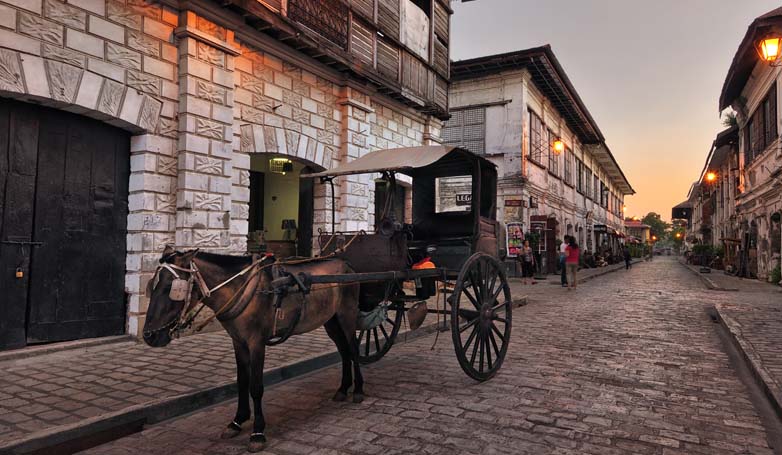
The heritage sites in Vigan City, located in the Ilocos Sur province of the Philippines, offer a captivating journey back in time, showcasing the rich cultural and historical legacy of the Spanish colonial era. As a UNESCO World Heritage Site, Vigan is renowned for its well-preserved Spanish colonial and Asian architecture, which provides a unique glimpse into the Philippines’ colonial past. The heart of Vigan is its historic Calle Crisologo, a cobblestone street lined with centuries-old ancestral houses, quaint shops, and horse-drawn carriages, evoking the charm and elegance of a bygone era.
Another notable heritage site is the Vigan Cathedral, also known as St. Paul’s Metropolitan Cathedral, which stands as a testament to the city’s religious history with its Baroque-inspired architecture. Nearby, the Bantay Bell Tower offers panoramic views of the city and its surroundings. The Syquia Mansion, a museum showcasing the opulent lifestyle of a prominent Vigan family, and the Crisologo Museum, which houses memorabilia of the influential Crisologo family, further enrich the cultural experience. Visiting these heritage sites in Vigan City not only allows travelers to admire stunning architectural feats but also to delve deep into the rich tapestry of Filipino history and culture.
Facts
- The most iconic street in Vigan is Calle Crisologo, where horse-drawn carriages and centuries-old houses transport visitors to a bygone era.
- Vigan’s heritage village, locally known as “Mestizo District,” presents a range of ancestral houses, some of which have been converted into museums and souvenir shops.
- The distinctively designed, earthquake-baroque-style Vigan Cathedral is a must-visit landmark with a history interwoven with the city’s colonial past.
8. Sample the Flavors of Davao City’s Fruit Stands

Davao City’s fruit stands are a vibrant showcase of the region’s agricultural bounty, offering a delectable array of fresh, exotic fruits that delight both locals and tourists. Located throughout the city, these colorful stalls are particularly famous for their abundance of durian, often called the “king of fruits,” which is known for its strong aroma and creamy texture. Alongside durian, visitors can find an impressive selection of other tropical fruits such as mangosteen, rambutan, pomelo, and the sweet, golden-fleshed bananas that Davao is also known for. These fruit stands provide an immersive sensory experience, where the vibrant colors and fragrant scents create an inviting atmosphere for all who pass by.
In addition to being a feast for the senses, the fruit stands reflect the region’s rich agricultural heritage and the hard work of local farmers. For those seeking a taste of Mindanao’s natural sweetness, Davao City’s fruit stands are an essential stop, offering a delicious and authentic taste of the region’s freshest produce.
Facts
- Beyond durian, Davao is also famous for its sweet pomelos, mangosteens, and bananas, highlighting the region’s rich agricultural bounty.
- The city celebrates the annual Kadayawan Festival, which is a week-long Thanksgiving event that features fruit harvests, among other cultural showcases.
- Davao’s fruit markets aren’t just for tasting; they offer a multi-sensory experience where the vibrant colors, scents, and tastes provide a true feast for the senses.
9. Get a Glimpse of Royalty at the Royal Palace of the Sultanate of Sulu
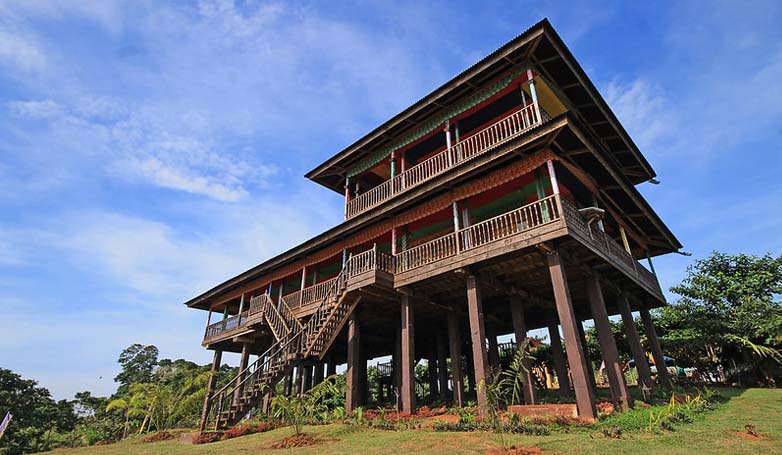
The Royal Palace of the Sultanate of Sulu, also known as Astana Putih, is a significant historical and cultural landmark located in Jolo, Sulu, in the southern Philippines. This grand palace serves as the official residence of the Sultan of Sulu, a title that holds deep historical importance dating back to the 15th century when the sultanate was a powerful maritime kingdom in the region. The palace, with its distinctive architectural design, reflects the rich cultural heritage and traditions of the Tausug people. It is a symbol of the enduring legacy and sovereignty of the Sultanate of Sulu.
Visitors to the palace can marvel at its intricate woodwork, traditional motifs, and the regal atmosphere that pervades the residence. The palace grounds are often the site of important cultural events and ceremonies, offering a glimpse into the vibrant customs and practices of the Tausug. The Royal Palace of the Sultanate of Sulu stands as a testament to the historical significance and cultural richness of the region, preserving the heritage of one of the oldest sultanates in Southeast Asia.
Facts
- The Sultanate of Sulu was established in the 15th century and played a crucial role in the spread of Islam in the Philippines.
- Though the royal palace itself may not be prominently showcased to tourists, remnants of the Sultanate’s influence can still be observed through local customs and historical sites in the Sulu region.
- The Sultanate was influential in establishing trade relations between the Philippines and neighboring countries, including China and various states in what is now Indonesia and Malaysia.
10. Adventure Awaits at Siargao’s Surfing Spots

Siargao’s surfing spots have garnered international acclaim, making this island in the province of Surigao del Norte, Mindanao, a premier destination for surfers from around the world. The crown jewel of Siargao’s surf scene is Cloud 9, renowned for its powerful right-hand reef break that offers thrilling rides and has hosted numerous international surfing competitions. This spot is famous for its thick, hollow tubes, making it a favorite for experienced surfers seeking the ultimate adrenaline rush. Beyond Cloud 9, Siargao boasts a variety of surf breaks suitable for all skill levels, including beginner-friendly waves at Jacking Horse and Quicksilver.
For those looking to escape the crowds, the island offers more secluded spots like Pacifico, where surfers can enjoy long, rolling waves in a more tranquil setting. The surf culture in Siargao is vibrant and welcoming, with numerous surf schools, board rentals, and a laid-back island vibe that makes it an ideal place for both seasoned surfers and newcomers to the sport. With its consistent swell, stunning scenery, and warm hospitality, Siargao’s surfing spots provide an unparalleled surfing experience that continues to attract wave riders from around the globe.
Facts
- Cloud 9 is Siargao’s most famous wave, providing consistent barrels and hosting international surfing competitions annually.
- Siargao is part of the Philippine Trench, and the underwater geography creates the ideal conditions for the powerful swells that surfers enjoy.
- Besides surfing, Siargao offers other adventure opportunities such as island hopping, snorkeling, and exploring the lush landscapes of the island, including its remarkable mangrove forests.
Until Next Time – Leaving No Stone Unturned in Mindanao
Our journey through Mindanao’s top tourist spots may have reached its conclusion, but the island’s wonders are endless. Each destination we covered promises memories that stand the test of time and adventures that beckon you back. Whether you’re a history buff reliving the past in Vigan, an adrenaline junkie conquering the waves of Siargao, or a seeker of tranquility in the serene waters of Lake Sebu, Mindanao has something for every kind of traveler.
The true essence of Mindanao lies beyond its landscapes—it’s woven into the fabric of the local culture, cuisine, and the warm hospitality of its people. So, pack your bags, grab your passport, and let Mindanao’s charm capture your heart and invigorate your soul.
FAQs about the Tourist Spots in Mindanao
1. Is Mindanao safe for tourists?
Safety can vary by area. Some regions in Mindanao are generally safe for tourists, while others may have travel advisories due to civil unrest or other concerns. Always check your government’s travel advisories and consider hiring a local guide.
2. What is the best time to visit Mindanao?
The best time to visit is during the dry season from March to June when the weather is favorable for outdoor activities. However, certain areas may be ideal during specific festivals or events.
3. Do I need to speak Filipino or Bisaya to travel to Mindanao?
While knowing Filipino or Bisaya can enhance your experience, many locals in tourist spots speak English, and signage is often bilingual.
4. What should I pack for a trip to Mindanao?
Pack light breathable clothing, appropriate footwear for trekking or beach activities, swimwear, sunscreen, a hat, and insect repellent. Also, consider bringing any necessary medications and a basic first-aid kit. Here are some additional packing guides for visiting the Philippines, click here.


